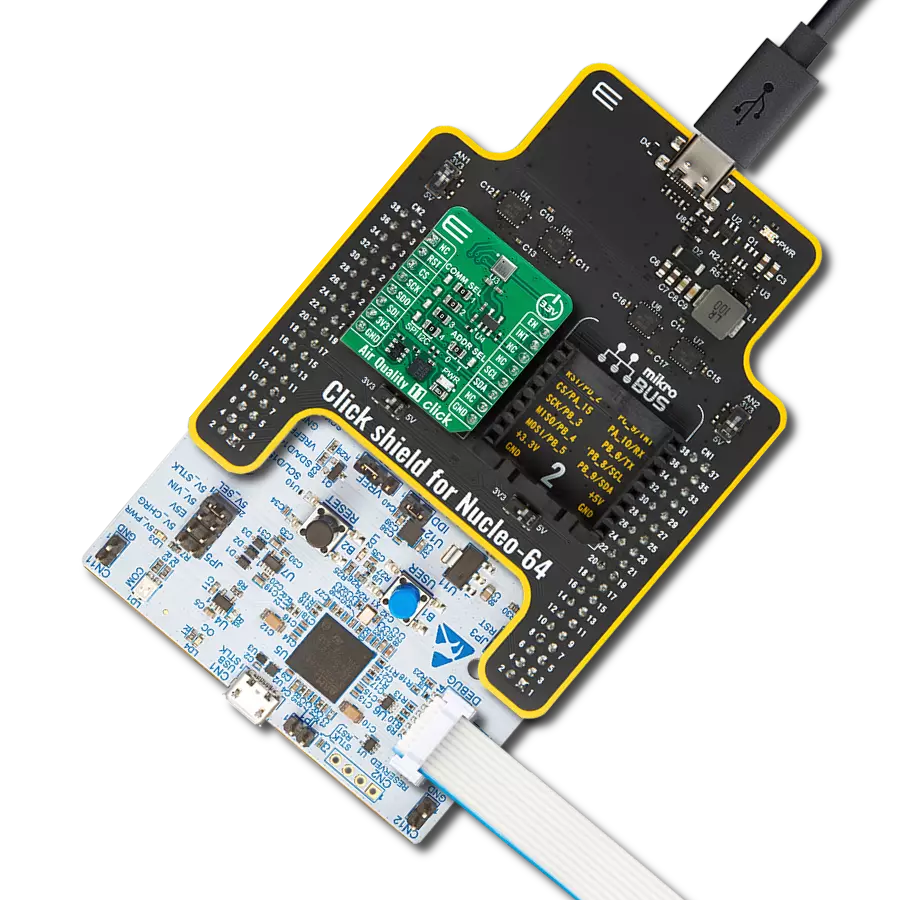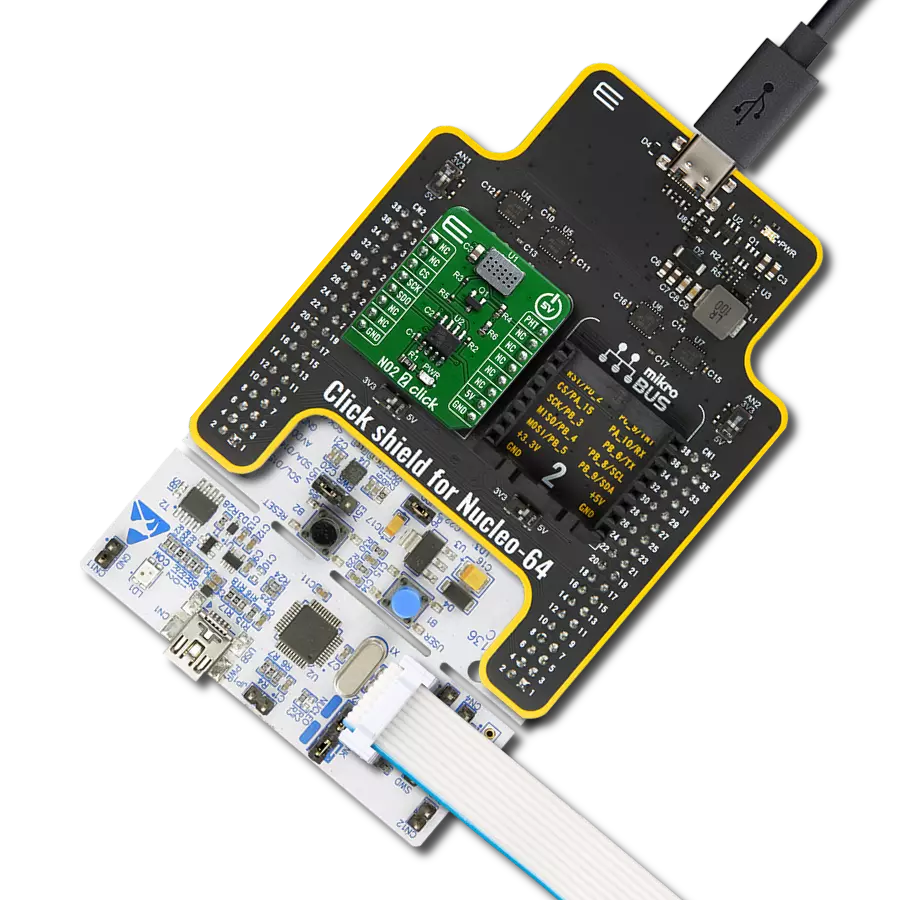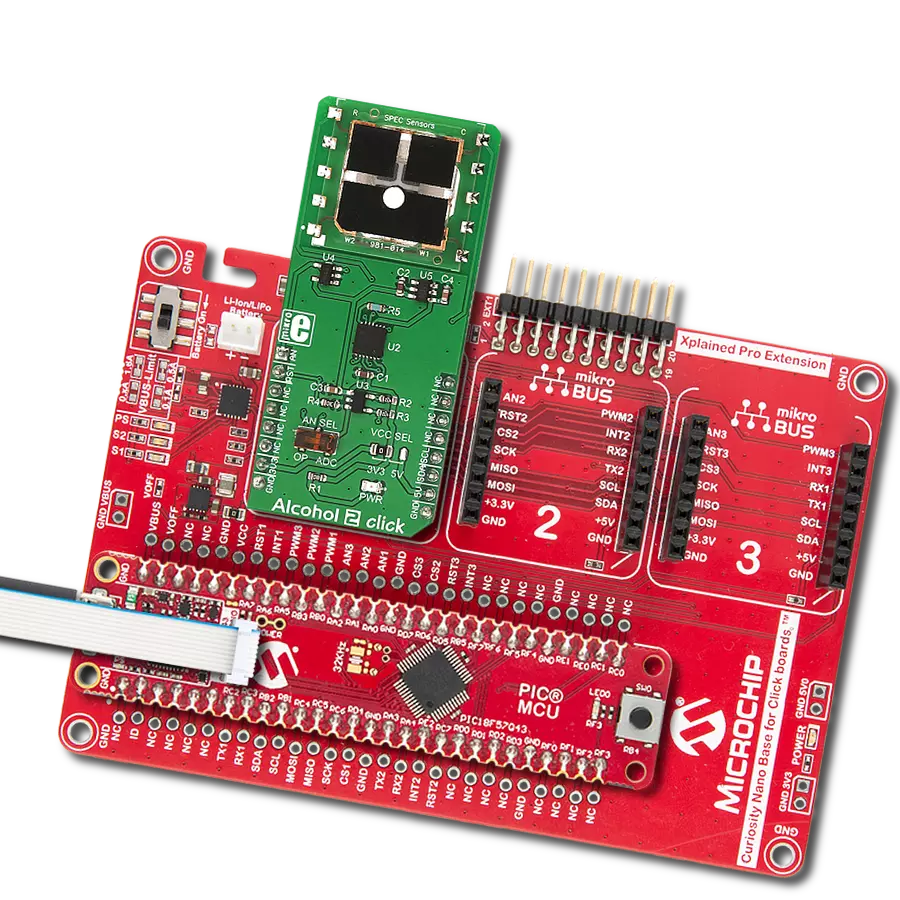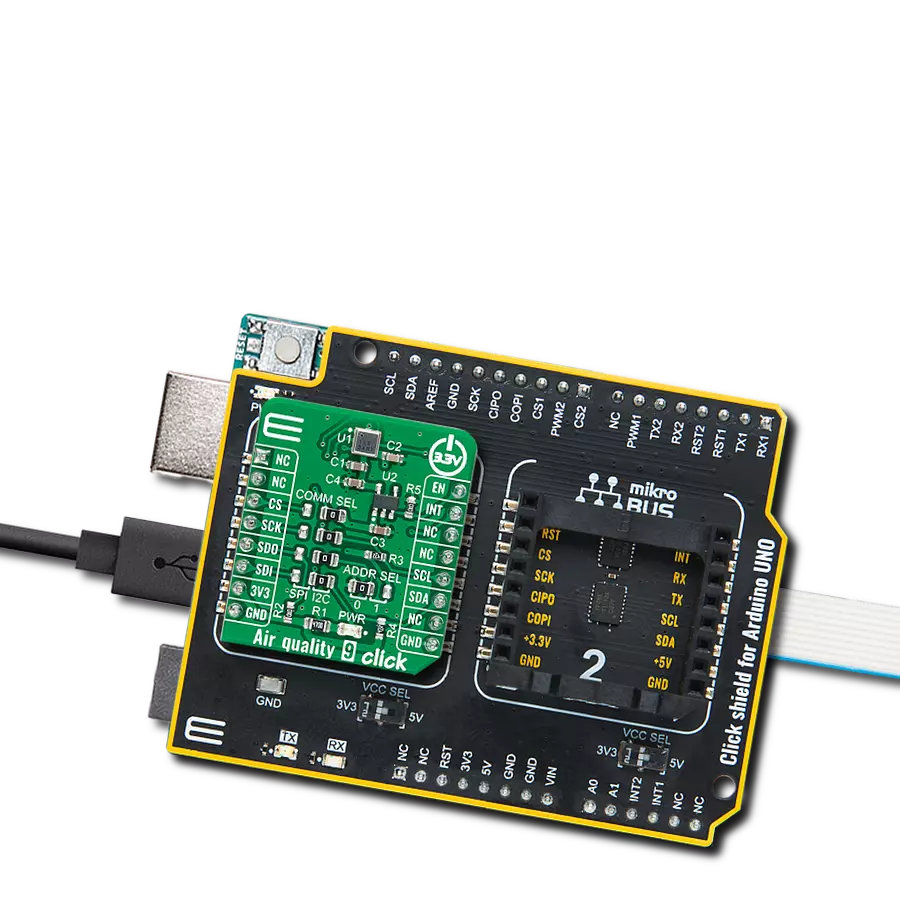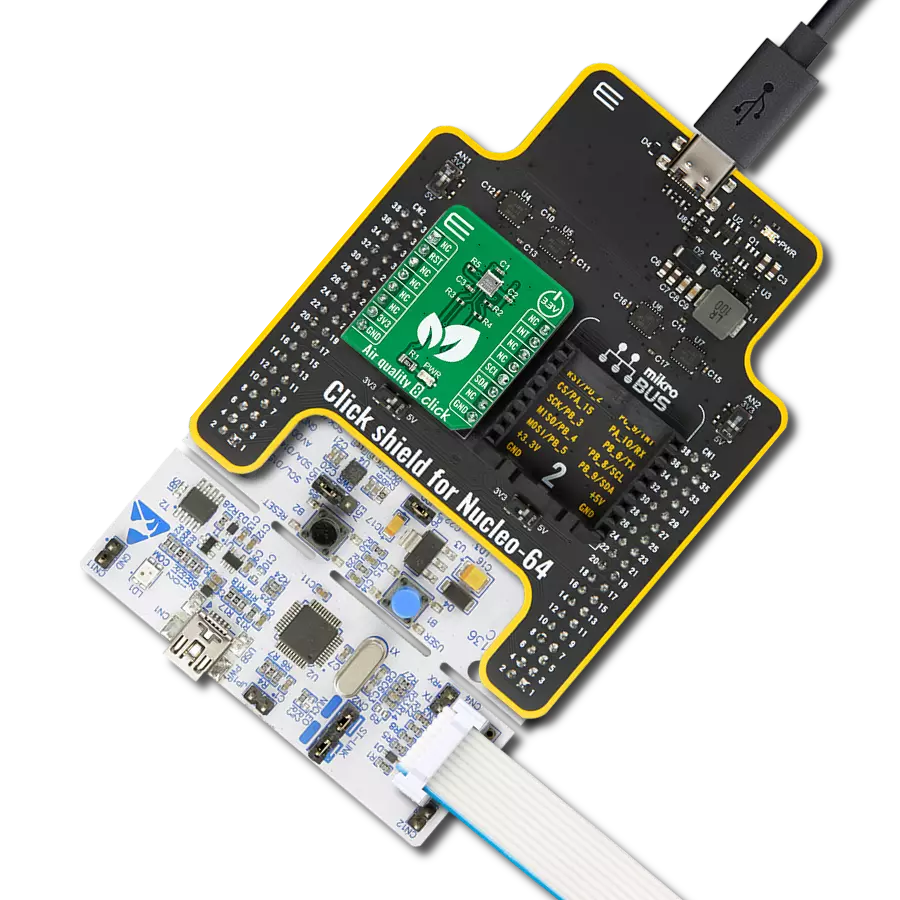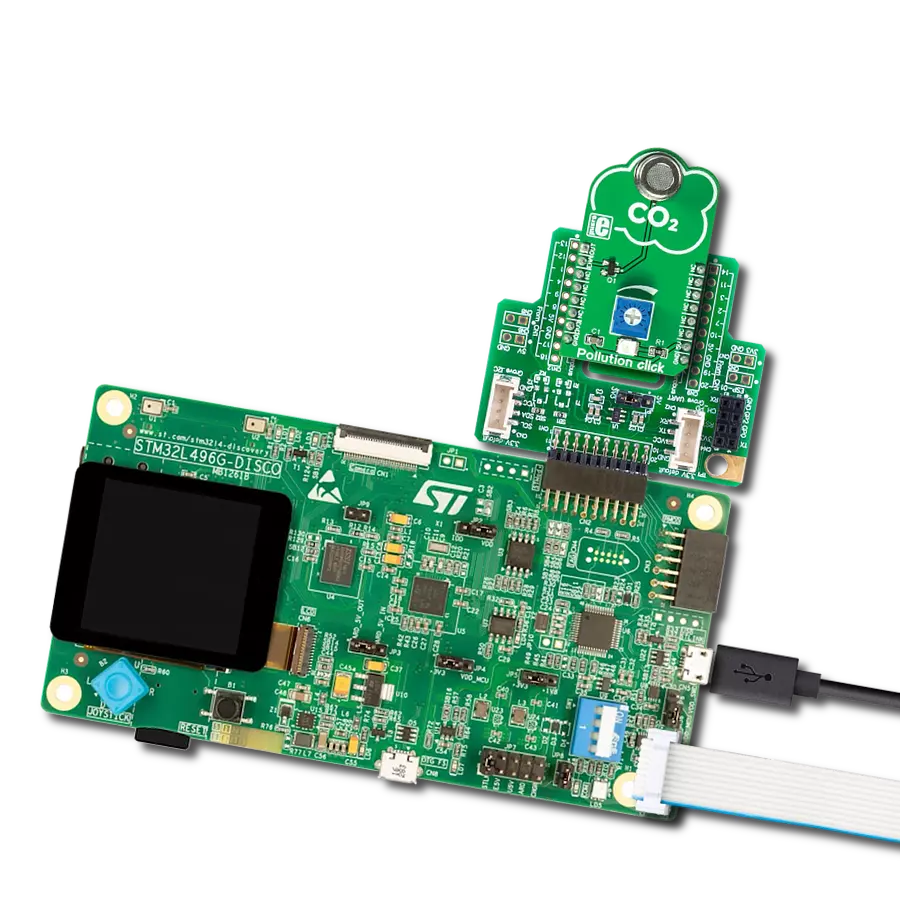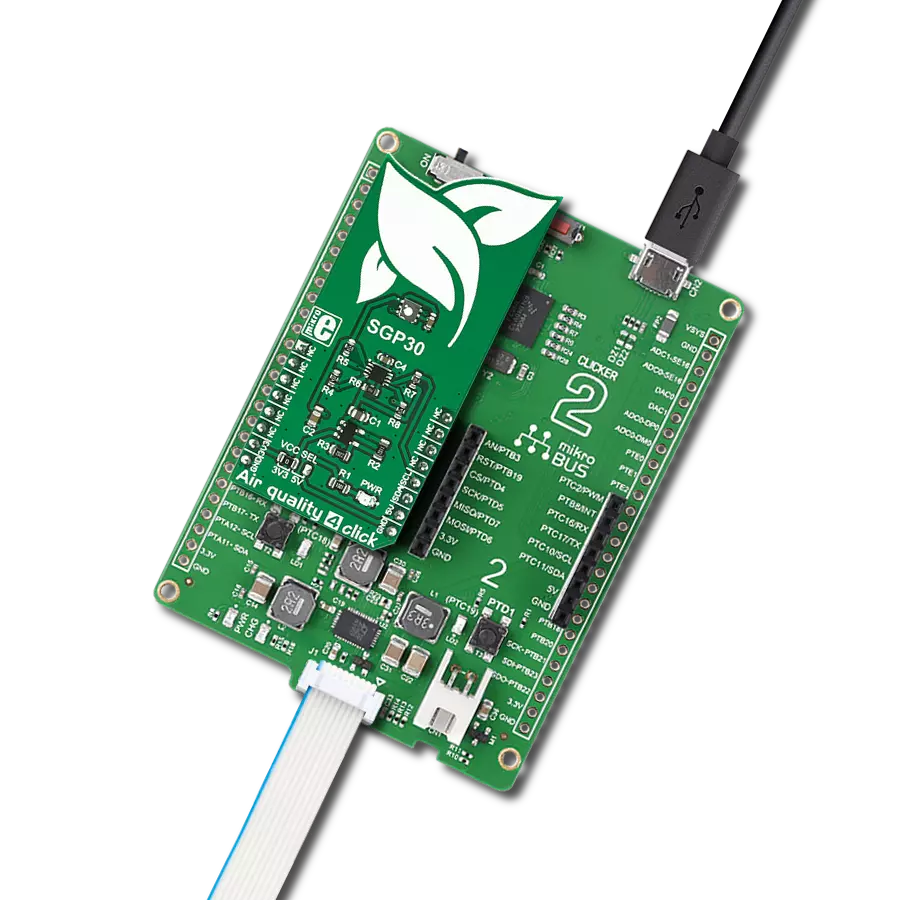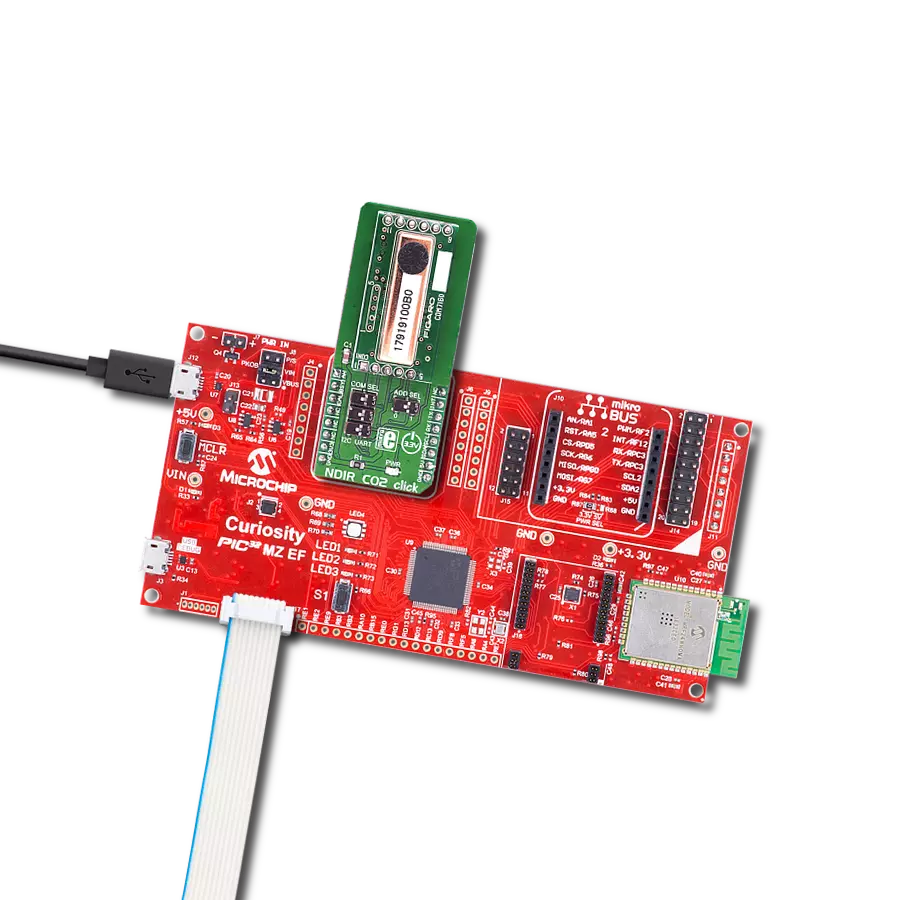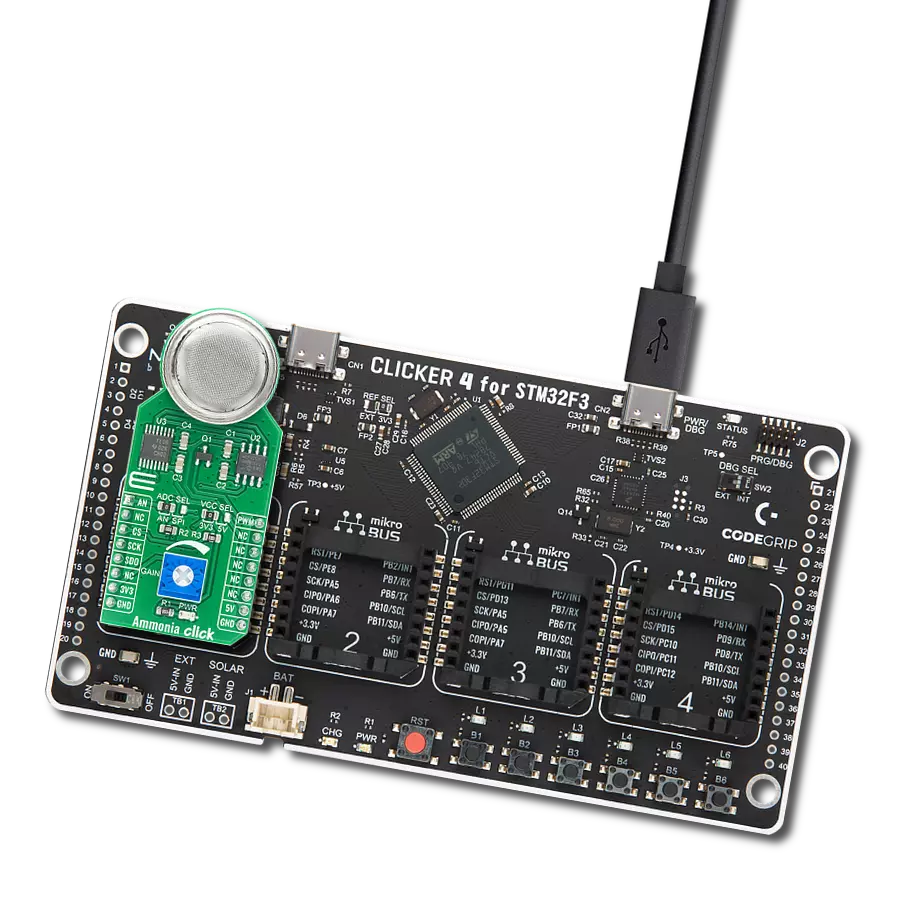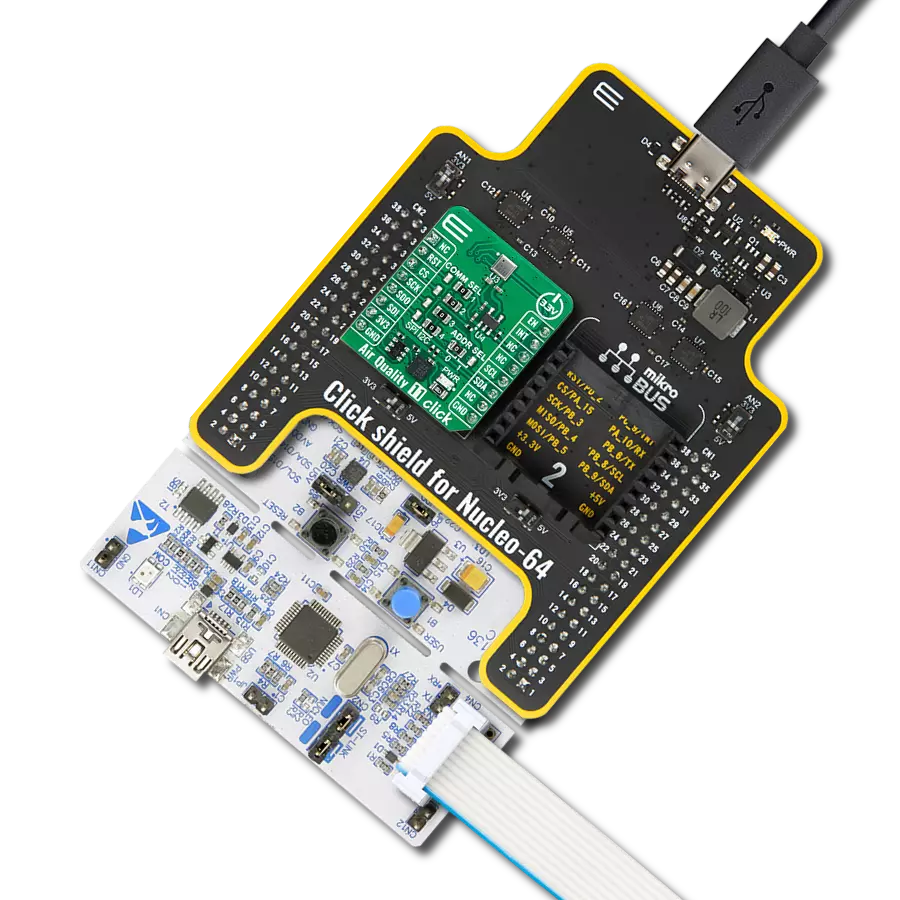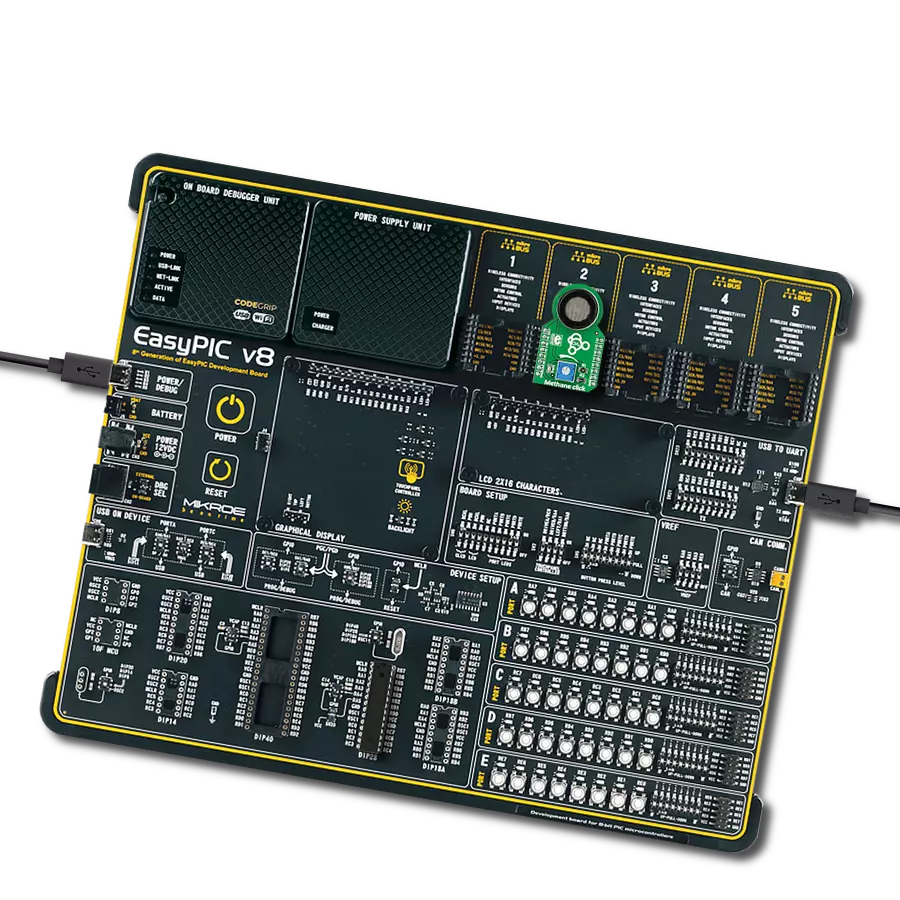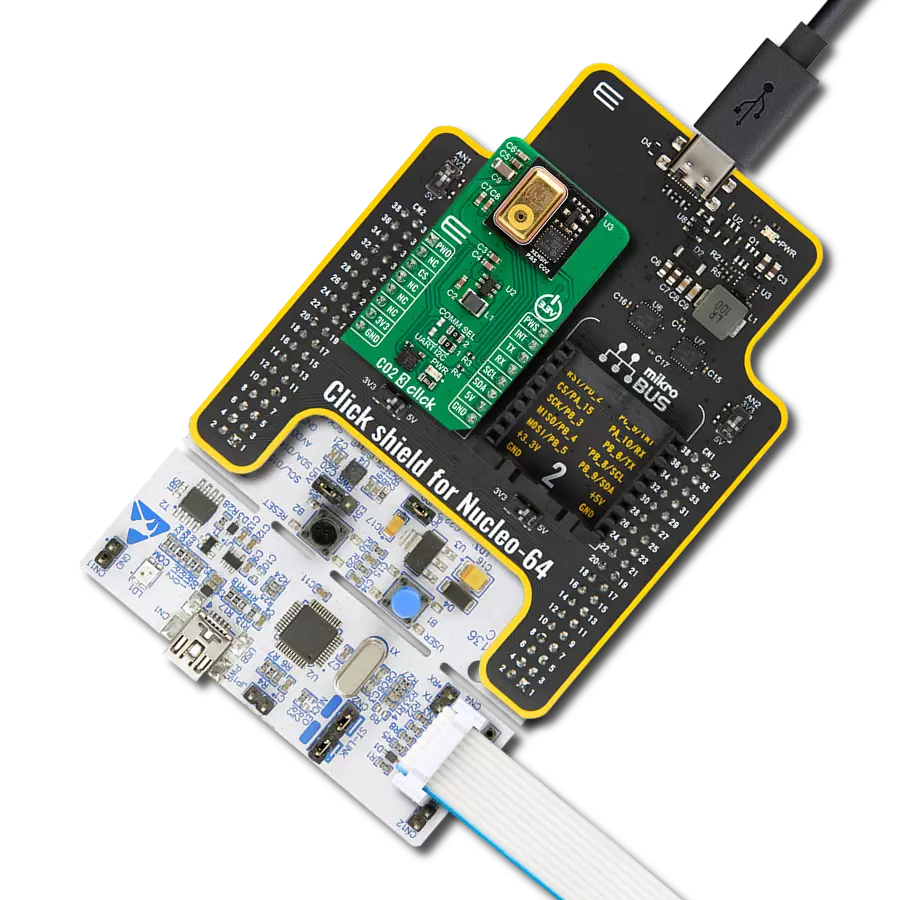Our comprehensive air quality monitoring solution empowers individuals, businesses, and communities with accurate data to make informed decisions for healthier surroundings.
A
A
Hardware Overview
How does it work?
Air Quality 7 Click is based on the MiCS-VZ-89TE, an integrated sensor module from Amphenol for indoor air quality monitoring. The MiCS-VZ-89TE combines the most modern MOS sensor technology with intelligent detection algorithms to control VOCs and CO2 fluctuations in buildings. Among other appealing features like 3.3V supply, I2C communication, and calibration-free high sensitivity, this module has a small size factor. The sensor must not be exposed to high concentrations of organic solvents, ammonia, silicone vapor, or cigarette smoke to avoid poisoning the sensitive layer. It should be protected against water and dust projections, and its Vendor strongly recommends using ESD protection equipment to handle the sensor. This Click board™ is easy to program and read data because it does not require an overly demanding configuration. The first step is the initialization of
all the necessary peripherals and pins. The additional delay time of a couple of seconds during system initialization is needed because this Click board™ needs some time to establish the measurements. The second initialization is the I2C driver and communication test by reading the revision information of the module. If the CRC check is OK, it allows the program to go on; if it's not, a user needs to restart the program. The user can read the air quality status if every step is valid. This can also be seen in an example code that contains easy-to-use functions that may be used as a reference for further development. Air quality 7 Click communicates with MCU using the standard I2C 2-Wire interface that supports Standard-Mode operation with bit rates up to 100 kbit/s. The MiCS-VZ-89TE slave address contains seven fixed bits. The slave address byte is the first byte received following the START condition from
the host device. The first part of the address byte consists of a 4-bit device code, which is set to 1110 for the IAQS, followed by three address bits (A2, A1, A0), which are programmed at 0. The dual signal output routed on the OUT pin of the mikroBUS™ socket, which brings the results of the measurements, can be read through a multiplexed PWM output or an I2C bus. This Click board™ is designed to be operated only with a 3.3V logic voltage level. A proper logic voltage level conversion should be performed before the Click board™ is used with MCUs with different logic voltage levels. More information about the MiCS-VZ-89TE can be found in the attached datasheet. However, the Click board™ comes equipped with a library that contains easy-to-use functions and a usage example that may be used as a reference for further development.
Features overview
Development board
Nucleo-64 with STM32F446RE MCU offers a cost-effective and adaptable platform for developers to explore new ideas and prototype their designs. This board harnesses the versatility of the STM32 microcontroller, enabling users to select the optimal balance of performance and power consumption for their projects. It accommodates the STM32 microcontroller in the LQFP64 package and includes essential components such as a user LED, which doubles as an ARDUINO® signal, alongside user and reset push-buttons, and a 32.768kHz crystal oscillator for precise timing operations. Designed with expansion and flexibility in mind, the Nucleo-64 board features an ARDUINO® Uno V3 expansion connector and ST morpho extension pin
headers, granting complete access to the STM32's I/Os for comprehensive project integration. Power supply options are adaptable, supporting ST-LINK USB VBUS or external power sources, ensuring adaptability in various development environments. The board also has an on-board ST-LINK debugger/programmer with USB re-enumeration capability, simplifying the programming and debugging process. Moreover, the board is designed to simplify advanced development with its external SMPS for efficient Vcore logic supply, support for USB Device full speed or USB SNK/UFP full speed, and built-in cryptographic features, enhancing both the power efficiency and security of projects. Additional connectivity is
provided through dedicated connectors for external SMPS experimentation, a USB connector for the ST-LINK, and a MIPI® debug connector, expanding the possibilities for hardware interfacing and experimentation. Developers will find extensive support through comprehensive free software libraries and examples, courtesy of the STM32Cube MCU Package. This, combined with compatibility with a wide array of Integrated Development Environments (IDEs), including IAR Embedded Workbench®, MDK-ARM, and STM32CubeIDE, ensures a smooth and efficient development experience, allowing users to fully leverage the capabilities of the Nucleo-64 board in their projects.
Microcontroller Overview
MCU Card / MCU
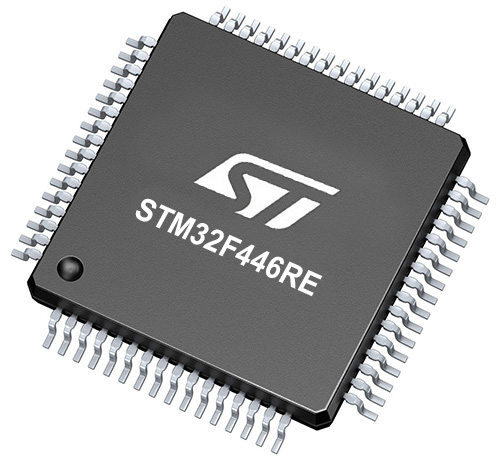
Architecture
ARM Cortex-M4
MCU Memory (KB)
512
Silicon Vendor
STMicroelectronics
Pin count
64
RAM (Bytes)
131072
You complete me!
Accessories
Click Shield for Nucleo-64 comes equipped with two proprietary mikroBUS™ sockets, allowing all the Click board™ devices to be interfaced with the STM32 Nucleo-64 board with no effort. This way, Mikroe allows its users to add any functionality from our ever-growing range of Click boards™, such as WiFi, GSM, GPS, Bluetooth, ZigBee, environmental sensors, LEDs, speech recognition, motor control, movement sensors, and many more. More than 1537 Click boards™, which can be stacked and integrated, are at your disposal. The STM32 Nucleo-64 boards are based on the microcontrollers in 64-pin packages, a 32-bit MCU with an ARM Cortex M4 processor operating at 84MHz, 512Kb Flash, and 96KB SRAM, divided into two regions where the top section represents the ST-Link/V2 debugger and programmer while the bottom section of the board is an actual development board. These boards are controlled and powered conveniently through a USB connection to program and efficiently debug the Nucleo-64 board out of the box, with an additional USB cable connected to the USB mini port on the board. Most of the STM32 microcontroller pins are brought to the IO pins on the left and right edge of the board, which are then connected to two existing mikroBUS™ sockets. This Click Shield also has several switches that perform functions such as selecting the logic levels of analog signals on mikroBUS™ sockets and selecting logic voltage levels of the mikroBUS™ sockets themselves. Besides, the user is offered the possibility of using any Click board™ with the help of existing bidirectional level-shifting voltage translators, regardless of whether the Click board™ operates at a 3.3V or 5V logic voltage level. Once you connect the STM32 Nucleo-64 board with our Click Shield for Nucleo-64, you can access hundreds of Click boards™, working with 3.3V or 5V logic voltage levels.
Used MCU Pins
mikroBUS™ mapper
Take a closer look
Click board™ Schematic

Step by step
Project assembly
Software Support
Library Description
This library contains API for Air Quality 7 Click driver.
Key functions:
airquality7_get_status- Get Status functionairquality7_get_revision- Get Revision functionairquality7_get_r0_calib- Get R0 Calibration function.
Open Source
Code example
The complete application code and a ready-to-use project are available through the NECTO Studio Package Manager for direct installation in the NECTO Studio. The application code can also be found on the MIKROE GitHub account.
/*!
* \file
* \brief AirQuality7 Click example
*
* # Description
* This demo application measures air quality.
*
* The demo application is composed of two sections :
*
* ## Application Init
* Initializes I2C driver and reads revision date of the module.
* If CRC check is OK allows the program to go on, otherwise, it displays a message that
* the program needs to be restarted.
*
* ## Application Task
* Reads air quality status every 1500ms and shows the results on the USB UART.
*
* \author MikroE Team
*
*/
// ------------------------------------------------------------------- INCLUDES
#include "board.h"
#include "log.h"
#include "airquality7.h"
// ------------------------------------------------------------------ VARIABLES
static airquality7_t airquality7;
static log_t logger;
uint16_t airquality7_tvoc_ppb;
uint16_t airquality7_co2_ppm;
uint32_t airquality7_res_val_ohm;
airquality7_err_t airquality7_err_code;
// ------------------------------------------------------ APPLICATION FUNCTIONS
void application_init ( void )
{
log_cfg_t log_cfg;
airquality7_cfg_t cfg;
uint8_t airquality7_rev_year = AIRQUALITY7_DUMMY;
uint8_t airquality7_rev_month = AIRQUALITY7_DUMMY;
uint8_t airquality7_rev_day = AIRQUALITY7_DUMMY;
uint8_t airquality7_rev_ascii_code = AIRQUALITY7_DUMMY;
/**
* Logger initialization.
* Default baud rate: 115200
* Default log level: LOG_LEVEL_DEBUG
* @note If USB_UART_RX and USB_UART_TX
* are defined as HAL_PIN_NC, you will
* need to define them manually for log to work.
* See @b LOG_MAP_USB_UART macro definition for detailed explanation.
*/
LOG_MAP_USB_UART( log_cfg );
log_init( &logger, &log_cfg );
log_info( &logger, "---- Application Init ----" );
// Click initialization.
airquality7_cfg_setup( &cfg );
AIRQUALITY7_MAP_MIKROBUS( cfg, MIKROBUS_1 );
airquality7_init( &airquality7, &cfg );
airquality7_tvoc_ppb = AIRQUALITY7_DUMMY;
airquality7_co2_ppm = AIRQUALITY7_DUMMY;
airquality7_res_val_ohm = AIRQUALITY7_DUMMY;
airquality7_err_code = airquality7_get_revision( &airquality7,
&airquality7_rev_year,
&airquality7_rev_month,
&airquality7_rev_day,
&airquality7_rev_ascii_code );
if ( airquality7_err_code == AIRQUALITY7_ERR_OK )
{
log_printf( &logger, " Revision date: %.2u.%.2u.%.2u\r\n", ( uint16_t ) airquality7_rev_day,
( uint16_t ) airquality7_rev_month,
( uint16_t ) airquality7_rev_year );
log_printf( &logger, " ASCII code for a charter: %u \r\n", ( uint16_t ) airquality7_rev_ascii_code );
}
else
{
log_printf( &logger, "CRC ERROR READING REVISION. \r\n" );
Delay_ms ( 1000 );
for ( ; ; )
{
log_printf( &logger, "PLEASE, RESTART YOUR SYSTEM...\r\n" );
Delay_ms ( 1000 );
log_printf( &logger, " \r\n \r\n " );
Delay_ms ( 1000 );
}
}
log_printf( &logger, "----------------------------------------- \r\n" );
Delay_ms ( 500 );
}
void application_task ( void )
{
airquality7_err_code = airquality7_get_status( &airquality7,
&airquality7_tvoc_ppb,
&airquality7_co2_ppm,
&airquality7_res_val_ohm,
AIRQUALITY7_NULL );
if ( airquality7_err_code == AIRQUALITY7_ERR_OK )
{
uint8_t cnt;
log_printf( &logger, " tVOC [ppb] = %u \r\n", airquality7_tvoc_ppb );
log_printf( &logger, " CO2 [ppm] = %u \r\n", airquality7_co2_ppm );
log_printf( &logger, " Resistor value [ohm] = %lu \r\n", airquality7_res_val_ohm );
log_printf( &logger, "----------------------------------------- \r\n" );
}
Delay_ms ( 1000 );
Delay_ms ( 500 );
}
int main ( void )
{
/* Do not remove this line or clock might not be set correctly. */
#ifdef PREINIT_SUPPORTED
preinit();
#endif
application_init( );
for ( ; ; )
{
application_task( );
}
return 0;
}
// ------------------------------------------------------------------------ END
Additional Support
Resources
Category:Gas



















